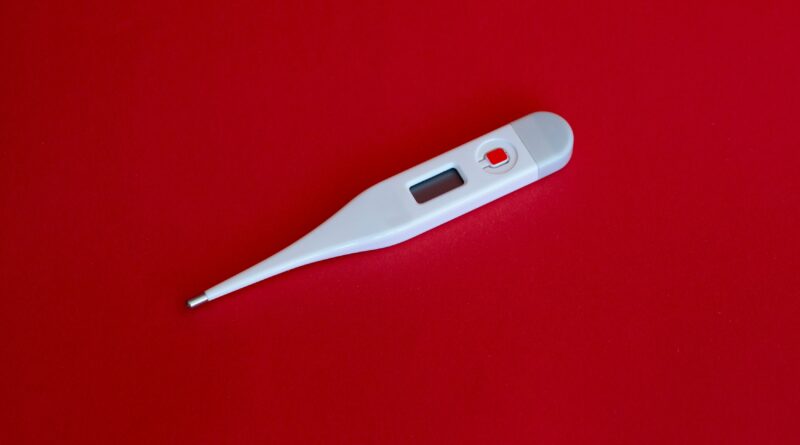Understanding Typhoid : Causes, Cure, and Tips
Typhoid fever is a serious illness caused by Salmonella Typhi bacteria. It is prevalent in areas with poor sanitation and is often spread through contaminated water and food. Recognizing the symptoms early and following the right course of treatment is crucial to recovery. In this blog, we will delve into the reasons behind typhoid fever, how to treat it, and some essential tips for a smooth recovery.
What is Typhoid Fever?
Typhoid fever is a bacterial infection that affects various parts of the body, especially the digestive system. The primary mode of transmission is through ingestion of food or water contaminated with the Salmonella Typhi bacterium. Once ingested, the bacteria can multiply in the intestines and then enter the bloodstream, leading to systemic infection.
Symptoms of Typhoid Fever
Common symptoms of typhoid fever include:
- High Fever (up to 104°F or 40°C)
- Weakness and Fatigue
- Headache
- Abdominal Pain
- Loss of Appetite
- Diarrhea or Constipation
- Skin Rash with flat, rose-colored spots

Reasons for Typhoid Fever
- Contaminated Food and Water: The primary cause of typhoid is consuming water or food that has been contaminated with Salmonella Typhi.
- Poor Sanitation: Areas with poor sewage management and waste disposal increase the risk of water contamination.
- Person-to-Person Transmission: Although less common, direct contact with an infected person can spread the bacteria through improper hygiene practices, such as not washing hands after using the restroom.
Why Does Typhoid Cause Fever?
The fever in typhoid is a result of the body’s immune response to the infection. Here’s a breakdown of the process:
- Immune System Activation: Once the Salmonella Typhi bacteria enter the bloodstream, the immune system detects the foreign invaders and begins to release chemicals known as pyrogens.
- Pyrogens and Fever: Pyrogens act on the hypothalamus (the body’s thermostat) in the brain, causing it to raise the body’s temperature, resulting in fever.
- Persistent Infection: As the bacteria continue to replicate, the body maintains a higher temperature to try and eliminate the infection, which is why typhoid fever tends to last longer than typical fevers.
How to Treat Typhoid Fever
- Antibiotic Treatment:
- Antibiotics are the primary treatment for typhoid. Commonly used antibiotics include ciprofloxacin, azithromycin, and ceftriaxone.
- It’s essential to follow the prescribed course of antibiotics completely, even if symptoms improve, to ensure the infection is fully eradicated and to prevent antibiotic resistance.
- Hydration:
- Typhoid can cause dehydration due to high fever and diarrhea. Drinking plenty of clean, boiled or filtered water and oral rehydration solutions (ORS) can help maintain hydration levels.
- Coconut water, electrolyte drinks, and clear soups are also good options.
- Dietary Adjustments:
- Eat light, easily digestible foods such as boiled rice, soups, and steamed vegetables.
- Avoid spicy, fried, and high-fiber foods that can irritate the digestive system.
- Rest:
- Adequate rest is crucial to help the body focus its energy on fighting the infection. Avoid physical exertion during recovery.
- Regular Monitoring:
- It is essential to monitor temperature and overall health during the course of the treatment. Follow up with a healthcare provider to ensure the treatment is effective and that there are no complications.
Tips for Preventing Typhoid Fever
- Drink Safe Water:
- Use boiled or purified water for drinking and cooking. Avoid drinking untreated water from lakes, rivers, or untrusted sources.
- Practice Good Hygiene:
- Wash hands thoroughly with soap and water before eating and after using the restroom.
- Use hand sanitizers if soap and water are not available.
- Vaccination:
- A typhoid vaccine is available and is recommended for people traveling to areas where typhoid is common. Consult with a healthcare provider about the vaccination options.
- Avoid Raw Foods:
- Steer clear of raw fruits and vegetables unless they can be peeled. This reduces the risk of consuming contaminated produce.
- Always ensure that food is cooked thoroughly, especially meat and seafood.
- Maintain Clean Surroundings:
- Proper sanitation and disposal of waste are crucial to prevent contamination of water sources.
- Avoid street food in areas with poor hygiene standards.
Home Remedies for Symptom Relief
While antibiotics are necessary for treating typhoid, some home remedies can help alleviate symptoms:
- Basil Tea: Boil a few basil leaves in water and add a teaspoon of honey. Drinking this can help reduce fever and boost immunity.
- Clove Water: Clove has antibacterial properties. Boiling a few cloves in water and drinking it after it cools can help with digestive symptoms.
- Cold Compress: For high fever, placing a cold compress on the forehead can provide relief and help reduce the temperature.
When to Seek Medical Attention
It’s crucial to consult a healthcare professional if you experience:
- Persistent high fever despite medication
- Severe abdominal pain or distension
- Symptoms like confusion, extreme fatigue, or difficulty breathing
Delays in treatment can lead to complications such as intestinal bleeding, which can be life-threatening.
Conclusion
Typhoid fever is a preventable and treatable condition if diagnosed early and managed properly. By maintaining good hygiene, drinking safe water, and following the appropriate treatment plan, recovery is achievable. If you or someone you know is showing symptoms of typhoid fever, seek medical attention promptly to ensure a smooth and speedy recovery.
Stay informed, stay safe, and follow these guidelines to keep typhoid at bay!
